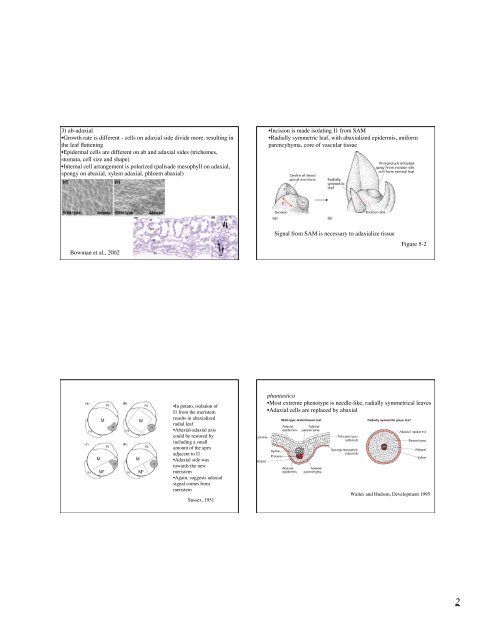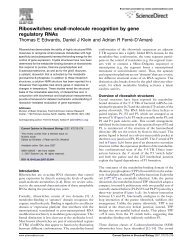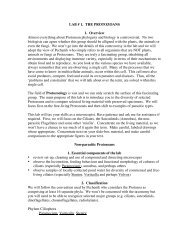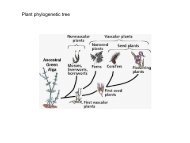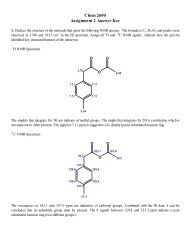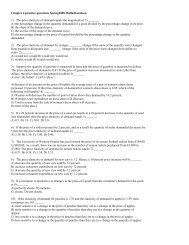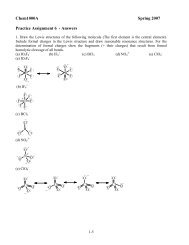Leaf has 3 axes:1) proximodistal, 2) centrolateral, 3) ab-adaxial ...
Leaf has 3 axes:1) proximodistal, 2) centrolateral, 3) ab-adaxial ...
Leaf has 3 axes:1) proximodistal, 2) centrolateral, 3) ab-adaxial ...
You also want an ePaper? Increase the reach of your titles
YUMPU automatically turns print PDFs into web optimized ePapers that Google loves.
3) <strong>ab</strong>-<strong>adaxial</strong><br />
•Growth rate is different - cells on <strong>adaxial</strong> side divide more, resulting in<br />
the leaf flattening<br />
•Epidermal cells are different on <strong>ab</strong> and <strong>adaxial</strong> sides (trichomes,<br />
stomata, cell size and shape)<br />
•Internal cell arrangement is polarized (palisade mesophyll on <strong>adaxial</strong>,<br />
spongy on <strong>ab</strong>axial, xylem <strong>adaxial</strong>, phloem <strong>ab</strong>axial)<br />
•Incision is made isolating I1 from SAM<br />
•Radially symmetric leaf, with <strong>ab</strong>axialized epidermis, uniform<br />
parencyhyma, core of vascular tissue<br />
Bowman et al., 2002<br />
Signal from SAM is necessary to <strong>adaxial</strong>ize tissue<br />
Figure 5-2<br />
•In potato, isolation of<br />
I1 from the meristem<br />
results in <strong>ab</strong>axialized<br />
radial leaf<br />
•Abaxial-<strong>adaxial</strong> axis<br />
could be restored by<br />
including a small<br />
amount of the apex<br />
adjacent to I1<br />
•Adaxial side was<br />
towards the new<br />
meristem<br />
•Again, suggests <strong>adaxial</strong><br />
signal comes from<br />
meristem<br />
Sussex, 1951<br />
phantastica<br />
•Most extreme phenotype is needle-like, radially symmetrical leaves<br />
•Adaxial cells are replaced by <strong>ab</strong>axial<br />
Waites and Hudson, Development 1995<br />
2


